
Cocytius antaeus, the giant sphinx, is a moth of the family Sphingidae. The species was first described by Dru Drury in 1773.
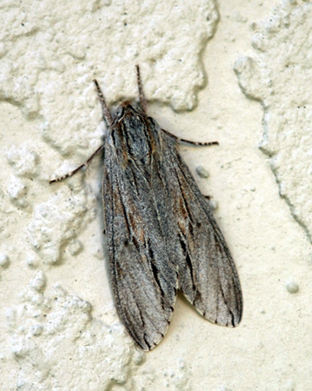
Isoparce cupressi, the baldcypress sphinx or cypress sphinx, is a moth of the family Sphingidae.

Manduca muscosa, the muscosa sphinx, is a moth of the family Sphingidae.

Manduca occulta, the occult sphinx, is a moth of the family Sphingidae.

Sphinx asellus, the asellus sphinx moth, is a moth of the family Sphingidae. The species was first described by Walter Rothschild and Karl Jordan in 1903. It is known from pinyon-juniper woodland and similar arid areas in the US states of Colorado, Nevada, Utah, extreme south-western Wyoming, Arizona, New Mexico and south-western Texas.

Sphinx dollii, or Doll's sphinx moth, is a moth of the family Sphingidae. It is known from arid brushlands and desert foothills from Nevada and southern California east through Utah, Arizona, Colorado, and from New Mexico to Oklahoma and Texas.
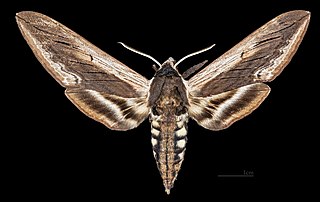
Sphinx drupiferarum, the wild cherry sphinx, is a moth of the family Sphingidae. The species was first described by James Edward Smith in 1797.

Lintneria eremitoides, the sage sphinx, is a moth from the family Sphingidae. The species was first described by Herman Strecker in 1874. It is known from North America's sandy prairies in the Great Plains from Kansas south through central Oklahoma to Texas, and possibly west to Colorado and New Mexico, and as a rare stray to western Missouri.

Lapara bombycoides, the northern pine sphinx is a moth of the family Sphingidae. The species was first described by Francis Walker in 1856.
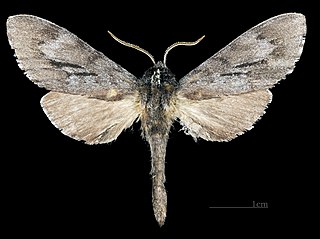
Lapara coniferarum, the southern pine sphinx, is a species of sphinx moth. It was first described by James Edward Smith in 1797. The species is listed as threatened in Connecticut.
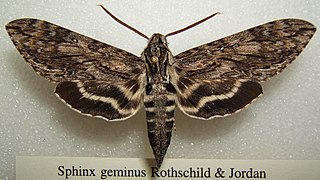
Lintneria geminus, the gemmed sphinx, is a moth of the family Sphingidae. The species was first described by Walter Rothschild and Karl Jordan in 1903. It is found from Mexico to Honduras and Nicaragua with an occasional stray into Texas.

Lintneria istar, the Istar sphinx moth, is a moth of the family Sphingidae. The species was first described by Walter Rothschild and Karl Jordan in 1903. It is found in mountains and pine-oak woodlands from southern Arizona east to southern Texas and south through Mexico to Guatemala.

Sphinx leucophaeata is a moth of the family Sphingidae.

Lintneria separatus, the separated sphinx, is a moth of the family Sphingidae. The species was first described by Berthold Neumoegen in 1885. It is found from Colorado south through New Mexico and Arizona to Veracruz and Hidalgo in Mexico.

Sphinx vashti, the Vashti sphinx, is a member of the family Sphingidae of moths. It is found in North America from British Columbia east to Manitoba, south to southern California, Nevada, central Arizona, New Mexico and western Texas.

Aellopos clavipes, also known as the clavipes sphinx, is a moth of the family Sphingidae.

Erinnyis pallida, the pallid sphinx, is a moth of the family Sphingidae. The species was first described by Augustus Radcliffe Grote in 1865. It is known to be common in Cuba.

Ceratomia sonorensis, the Sonoran sphinx, is a moth of the family Sphingidae. It is known from high altitudes in oak and oak-pine associations in Madrean woodland in Sonora, Mexico and in south-eastern Arizona.

Sphinx chisoya, the chisoya sphinx, is a moth of the family Sphingidae. It is known from tropical and subtropical lowlands from southern Texas to Mexico.
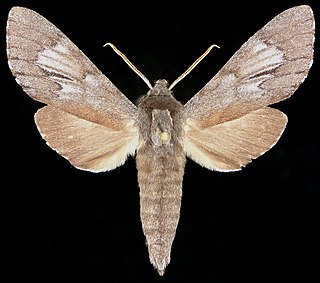
Lapara phaeobrachycerousus, the Gulf pine sphinx, is a moth of the family Sphingidae. It is known from pine forests in the US states of Mississippi and eastern Louisiana.





















